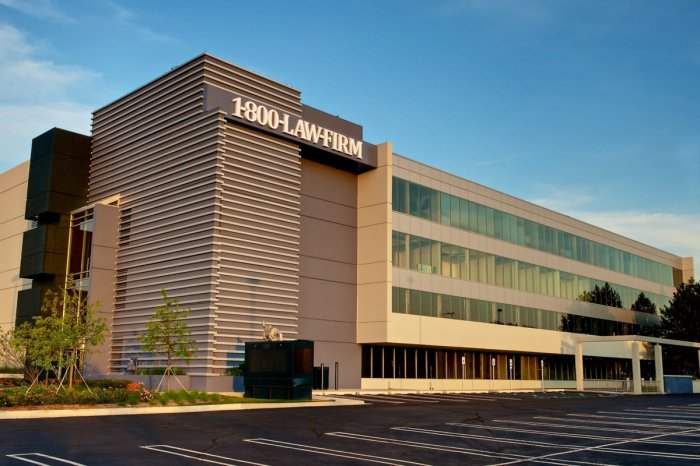Welcome to the ultimate guide to understanding the hardest like a mattress crossword clue. Whether you’re a seasoned crossword solver or just starting out, this guide will provide you with all the information you need to tackle even the most challenging mattress-related crossword puzzles.
From exploring different mattress types and their firmness levels to understanding mattress materials and construction methods, we’ll cover everything you need to know to solve those tricky crossword clues with ease.
Mattress Types
Mattresses are a crucial component of a restful and supportive night’s sleep. Understanding the different types of mattresses available can help you make an informed decision when choosing one that best suits your needs and preferences.
The firmness level, materials used, and construction methods are key factors that differentiate mattress types. Here’s a comprehensive comparison to assist you in your selection:
Innerspring Mattresses
- Firmness:Soft, medium, firm, or extra firm options available.
- Materials:Steel coils encased in fabric or foam layers.
- Construction:Coils are connected to each other, providing support and bounce.
- Advantages:Durable, supportive, affordable.
- Disadvantages:Can be noisy, may not conform to body contours.
Memory Foam Mattresses
- Firmness:Typically soft to medium, conforms to body shape.
- Materials:Viscoelastic polyurethane foam that responds to body heat and pressure.
- Construction:Foam layers with varying densities.
- Advantages:Pressure-relieving, conforms to body contours, minimizes motion transfer.
- Disadvantages:Can retain heat, may not provide sufficient support for some sleepers.
Latex Mattresses, Hardest like a mattress crossword clue
- Firmness:Medium to firm, provides buoyant support.
- Materials:Natural or synthetic latex foam derived from rubber trees.
- Construction:Foam layers with different densities and firmness levels.
- Advantages:Durable, hypoallergenic, breathable, conforms to body contours.
- Disadvantages:More expensive, may not be as supportive as other types.
Hybrid Mattresses
- Firmness:Varies depending on the combination of materials used.
- Materials:Combination of innerspring coils, memory foam, latex, or other materials.
- Construction:Layers of different materials are combined to provide support, comfort, and pressure relief.
- Advantages:Combines the benefits of multiple mattress types, provides tailored support and comfort.
- Disadvantages:Can be more expensive, may not be as durable as traditional innerspring mattresses.
Air Mattresses
- Firmness:Adjustable by inflating or deflating the mattress.
- Materials:Durable PVC or other synthetic materials.
- Construction:Inflatable chambers filled with air.
- Advantages:Portable, affordable, customizable firmness.
- Disadvantages:May not provide sufficient support, can puncture easily.
Mattress Firmness Levels: Hardest Like A Mattress Crossword Clue

Mattress firmness is a crucial factor to consider when choosing a mattress. It significantly impacts comfort, support, and sleep quality. This guide will provide an overview of mattress firmness levels, their measurement, and how they affect comfort and support.
Mattress firmness is typically measured on a scale of 1 to 10, with 1 being the softest and 10 being the firmest. The ideal firmness level depends on various factors, including body weight, sleeping position, and personal preferences.
When searching for a mattress that promotes well-being and sustainability, consider an Organic Non Toxic Mattress . These mattresses are crafted from natural and organic materials, ensuring a healthier sleep environment. For a more in-depth review of a specific organic mattress, check out the Sloom Mattress Review .
Soft Mattresses (1-3)
Soft mattresses provide a plush, contouring feel that cradles the body. They are ideal for people who prefer to sink into their mattress and experience pressure relief. However, soft mattresses may not provide sufficient support for heavier individuals or those who sleep on their back or stomach.
Medium Mattresses (4-6)
Medium mattresses offer a balance of comfort and support. They conform to the body’s curves while providing enough firmness to prevent excessive sinking. Medium mattresses are suitable for most sleepers, regardless of body weight or sleeping position.
Firm Mattresses (7-9)
Firm mattresses provide a supportive surface that minimizes body contouring. They are ideal for people who prefer a more structured feel and require additional support for their back or stomach. However, firm mattresses may be too uncomfortable for those who prefer a softer feel.
Extra Firm Mattresses (10)
Extra firm mattresses offer the highest level of support. They are typically recommended for individuals with back pain or other orthopedic issues. However, extra firm mattresses may not provide sufficient comfort for most sleepers.
Mattress Materials
Mattress materials play a crucial role in determining the comfort, support, and durability of a mattress. They can be broadly classified into two categories: natural and synthetic.
Natural materials, such as latex, cotton, and wool, are often sought after for their breathability, eco-friendliness, and hypoallergenic properties. Synthetic materials, on the other hand, like memory foam, polyurethane foam, and polyfoam, offer a wide range of firmness options and pressure relief capabilities.
Natural Mattress Materials
- Latex:A natural material derived from the sap of rubber trees, latex is known for its elasticity, durability, and pressure-relieving properties. It conforms to the body’s contours, providing excellent support and reducing pressure points.
- Cotton:A natural fiber that is soft, breathable, and hypoallergenic. Cotton is often used in mattress covers and padding layers to provide a comfortable and moisture-wicking sleeping surface.
- Wool:A natural fiber that is insulating, flame-resistant, and moisture-wicking. Wool is often used in mattress toppers and layers to provide warmth and regulate temperature.
Synthetic Mattress Materials
- Memory Foam:A synthetic material that conforms to the body’s contours, providing pressure relief and reducing motion transfer. Memory foam is known for its slow response time, which can be a drawback for some sleepers.
- Polyurethane Foam:A synthetic material that is durable, resilient, and affordable. Polyurethane foam is often used in the support layers of mattresses to provide firmness and support.
- Polyfoam:A synthetic material that is similar to polyurethane foam but less durable. Polyfoam is often used in low-cost mattresses and as a filler material.
Mattress Construction Methods
Mattresses are constructed using various methods, each with its own advantages and disadvantages. The three primary construction methods are innerspring, memory foam, and hybrid.
Innerspring Mattresses
Innerspring mattresses feature a core of interconnected coils that provide support and bounce. They offer good airflow and are generally more affordable than other types of mattresses. However, they may not conform as well to the body’s contours and can be noisy.
Memory Foam Mattresses
Memory foam mattresses are made of a viscoelastic material that molds to the body’s shape, providing excellent pressure relief. They are known for their comfort and motion isolation, making them a good choice for couples. However, they can retain heat and may not provide enough support for some sleepers.
Hybrid Mattresses
Hybrid mattresses combine elements of innerspring and memory foam construction. They typically have a core of coils with a layer of memory foam or other cushioning material on top. This provides a balance of support, comfort, and motion isolation. However, hybrid mattresses can be more expensive than other types of mattresses.
Mattress Features

Mattress features play a crucial role in enhancing comfort and optimizing sleep quality. These features address specific aspects of sleep, such as support, motion transfer, and temperature regulation.
Let’s delve into some key mattress features and explore how they contribute to overall mattress performance:
Edge Support
Edge support refers to the mattress’s ability to provide stable support when sitting or sleeping near the edges. Adequate edge support prevents the feeling of rolling off the bed and ensures a secure and comfortable sleeping experience.
Motion Isolation
Motion isolation measures the mattress’s ability to absorb and minimize motion transfer. This feature is particularly important for couples or individuals who move around during sleep. A mattress with good motion isolation prevents disruptions caused by a partner’s movements, allowing for undisturbed sleep.
Temperature Regulation
Temperature regulation is an essential feature for individuals who experience temperature fluctuations during sleep. Mattresses with temperature-regulating properties help maintain a comfortable sleeping temperature by dissipating heat or providing insulation as needed. This feature can significantly improve sleep quality, especially during hot or cold nights.
End of Discussion

So, whether you’re looking to expand your crossword knowledge or simply want to learn more about mattresses, this guide has got you covered. Get ready to impress your friends and family with your newfound crossword-solving skills!
FAQ Explained
What is the hardest type of mattress?
Extra firm mattresses are typically the hardest type of mattress.
What is the most common mattress material?
Memory foam is one of the most common mattress materials.
What is the most durable type of mattress?
Hybrid mattresses, which combine different materials, are often considered to be the most durable.